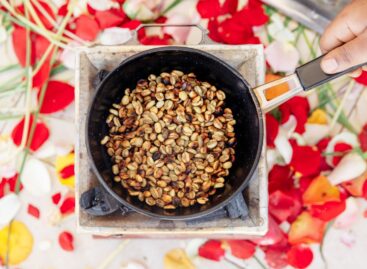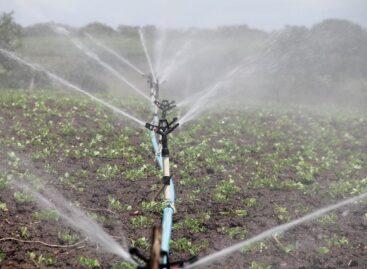Hungarian researchers found out what happens in the soil when a forest is planted instead of an arable field
Hungarian researchers found out what happens in the soil when a forest is planted instead of an arable field. The top layer of the soil of three different forest types was examined, which revealed that although a more colorful community of bacteria lives under the acacia forests, there are fewer nitrogen-fixing organisms.

(Photo: Pixabay)
According to Tibor Szili-Kovács, senior scientist at the Soil Science Institute of the HUN-REN Agricultural Research Center (ATK), which is participating in the research, the further results of the study can also be used to predict the effects of forest degradation due to climate change, according to the HUN-REN Center’s announcement sent to MTI on Thursday. The bacterial community composition, diversity and catabolic activity profile of topsoil samples collected under three different forest types – a twice-cut acacia stand, a young, naturally reforested and a middle-aged mixed hornbeam-oak stand – were compared, which were collected at the beginning of the 20th century in a they were planted on the site of former arable land. The results of the Soil Science Institute of the HUN-REN Agricultural Science Research Center, the Forestry Institute of the University of Sopron and the Department of Microbiology of ELTE, which carried out the research, were recently published in the framework of the “Creation of a transdisciplinary center of excellence for soil biome research for sustainable soil resources” project. Tibor Szili-Kovács is quoted in the announcement, who said about the research: their investigation focused on the role and importance of microorganisms that play a key role in the soil-plant system, about which we have little knowledge. Interventions by human activity – for example, changes in farming methods, cultivated plants, artificial fertilization, pesticides – can all affect the relationship between plants and microorganisms during evolution. “During plant cultivation, we must incorporate these new knowledge into sustainable agricultural and forestry systems,” added the researcher.
The study revealed that the most types of bacteria lived in the soil of the white acacia forest
Regarding the soil parameters, it was shown that the pH had the greatest effect on the structure of the bacterial community, while the catabolic activity pattern was influenced by the organic carbon content of the soil in addition to the pH of the soil. The substrate-induced respiration of the soil was the lowest in the recently logged oak forest, and the main driver of the variability of the catabolic activity among the forest stands was citrate utilization, the announcement states. The tests were carried out in an area that was previously used as arable land, but was later used as a forest, which can serve as a comparison basis for the more than 60-year-old crop cultivation experiments in the vicinity. These best-quality, most fertile chernozem-type soils are traditionally utilized as arable land, while the less productive ones are usually used for afforestation. This is why afforestation on such soil may be unusual, but it improves the quality of the soil and, moreover, increases soil carbon storage, which is also important from the point of view of climate protection – they emphasize in the announcement.
During the research carried out, the impact of direct forestry interventions (e.g. clear cutting) on soil microorganisms was also assessed
The results obtained in this way can even be used to predict the effects of forest degradation due to climate change – added the senior scientific associate of HUN-REN ATK. According to the researcher, however, the soil-improving fertilizers used in the fields do not cause problems in the future development of the forests. What’s more, some tree species can also be used for cleaning, so-called phytoremediation, soil contaminated with heavy metals or organic compounds. In the root system of the acacia, there are nitrogen-fixing bacteria living in symbiosis, which can fix a large amount of nitrogen from the air. Tibor Szili-Kovács explained that the increased nitrate concentration as a result of several decades of nitrogen fixation reduced the number of bacteria involved in nitrogen fixation in the soil of the acacia stand.
MTI
Related news
Climate-tolerant alternative in arable fields: peanuts could be one of the winners of climate change
🎧 Hallgasd a cikket: Lejátszás Szünet Folytatás Leállítás Nyelv: Auto…
Read more >Ministry of Agriculture: the government is giving priority support to the development of irrigation
🎧 Hallgasd a cikket: Lejátszás Szünet Folytatás Leállítás Nyelv: Auto…
Read more >AM: ornamental plant growers can continue to count on government support
🎧 Hallgasd a cikket: Lejátszás Szünet Folytatás Leállítás Nyelv: Auto…
Read more >Related news
KSH: industrial production fell by 5.4 percent in November compared to the same period of the previous year and by 2.0 percent compared to the previous month
🎧 Hallgasd a cikket: Lejátszás Szünet Folytatás Leállítás Nyelv: Auto…
Read more >Kifli.hu expands its delivery area by forty settlements
🎧 Hallgasd a cikket: Lejátszás Szünet Folytatás Leállítás Nyelv: Auto…
Read more >






